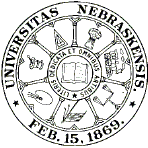
University Studies (University of Nebraska) (1888–1984)
Date of this Version
6-1976
Citation
1976 by the Board of Regents of the University of Nebraska
Abstract
AMERICAN LOCAL HISTORIES have traditionally focused upon the origins and early growth of communities while occasionally examining later periods of relative stability or renewed expansion. But many localities, particularly in rural areas, have undergone long periods of stagnation followed by decline and disintegration. These aspects of community existence have received much less attention and remain relatively unexplored. This is particularly true in the realm of agricultural history which in the United States has tended to steer away from the local history approach, especially when dealing with the dynamic changes of the twentieth century. The present volume represents a tentative effort to explore this void, examining the processes of socioeconomic change in an agricultural region of the Great Plains.
Perhaps the first question that arises whenever a local history appears concerns how the author happened to choose a particular geographical area as his subject and whether it accurately represents a significant sector of the broader national society. In this instance the author spent his childhood and adolescence in the region surveyed and thus developed a personal familiarity with it. Hopefully I have avoided the twin pitfalls of romanticizing "the world we have lost" on the one hand and expounding on "the horrors I have escaped" on the other, while minimizing the degree of distortion arising from personal bias. At the same time I have occasionally unearthed evidence of developments which lack printed documentation. Thus the methodologically demanding will discover to their displeasure that certain elements of intuitive interpretation have found their way into these pages. As for the typicality or representativeness of the area, this depends upon the specific phenomenon under consideration. For a further discussion of this point the reader is referred to the Conclusions.
In the process of researching and writing this work I have become indebted to numerous individuals in various positions and places. I wish particularly to thank Professor Earl Pomeroy of the University of Oregon and Professor John C. Hudson, now of the Geography Department at Northwestern University, for encouragement during the initial investigation of the topic. The staffs of the Extension Division of the University of Nebraska College of Agriculture and of the Nebraska State Historical Society proved very helpful. County officials in the courthouses at Ord and Greeley deserve praise for the patience with which they put up with their peculiar intruder over the course of several years. Professors Robert F. Berkhofer, Jr., and Maris Vinovskis of the University of Michigan read early drafts of the manuscript and offered helpful criticisms and encouragement. Finally, an expression of gratitude is due Professor Allan G. Bogue of the University of Wisconsin, who provided counsel and reassurance on numerous occasions when the project appeared on the verge of dissolution.

